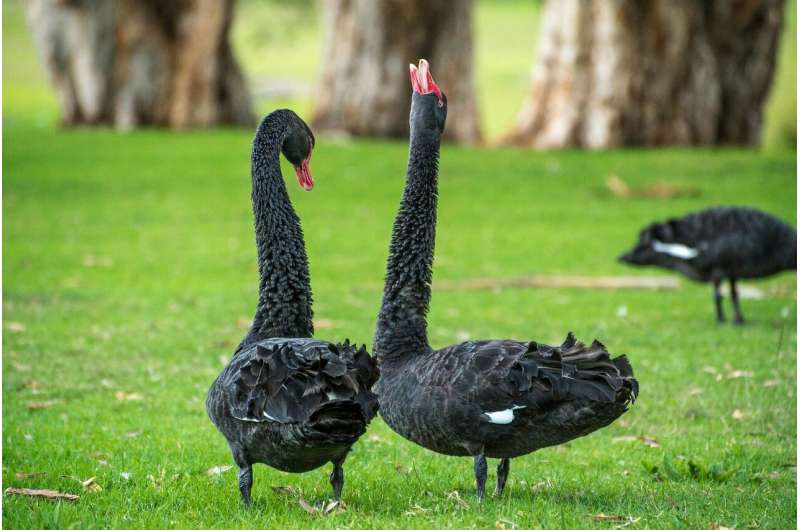Bird evolution unique in seeing shrinking testes

Birds are the only group of vertebrate animals to have repeatedly evolved smaller testes over time according to a new study.
A paper published in Ecology Letters by University of Reading researchers and colleagues has found that natural selection has led to smaller testes sizes among socially monogamous birds. The team suggest that the developments of mating behavior in birds may have led to an evolutionary loop that has led to smaller testes.
Dr. Joanna Baker, a research fellow at the University of Reading, said, "Rapidly shrinking testes may have happened as a result of the fantastic diversity of behaviors and traits we observe in birds today: from beautiful plumage colorations in birds of paradise, elaborate dancing displays in songbirds, through to dedicated parental care through extreme weather conditions in penguins.
"Bigger testes produce more sperm and so give animals a competitive advantage over their relatives with smaller testes, but are also very expensive to grow and maintain. Around 90% of birds are socially monogamous—where producing more sperm doesn't really matter—and so there has been lots of opportunity to reduce testes size in favor of other adaptations."
No other vertebrate group, including mammals, frogs, fish, and reptiles showed any similar pattern to birds. Although lots of frogs are socially monogamous, unlike birds, they tend to be external fertilizers, so producing lots of sperm is probably still likely to produce extreme competitive advantages.
In all vertebrates, testes size is astonishingly diverse, with enormous explosions of testes size change—both reductions and enlargements—during the last 400 million years of vertebrate evolutionary history.
Dr. Baker said, "For example, we find massive testes size changes in a group of frogs called foam-nesting tree frogs (Rhacophoridae). These animals have an extremely unusual method of mating in which males gather around a female and fertilize eggs by whipping their sperm into a sort-of 'foam' with their legs.
"Obviously, bigger testes that produce lots of sperm will give a male a competitive advantage in such foam nests: for example, the gray foam-nest tree frog has been known to mate with up to 12 males simultaneously."
Dr. Chris Venditti, an associate professor in evolutionary biology at the University of Reading, said, "We were surprised to find that no group of vertebrates showed any adaptations towards larger testes size during their evolutionary history—although all species could technically benefit from bigger testes, perhaps they are simply so expensive that maintaining size is enough. Although we thought that flight may have been an important factor in reducing testes size in birds, we don't observe a similar pattern in bats—so clearly there is something else at play.
More information: Joanna Baker et al. Rapid decreases in relative testes mass among monogamous birds but not in other vertebrates, Ecology Letters (2019). DOI: 10.1111/ele.13431
Journal information: Ecology Letters
Provided by University of Reading



















